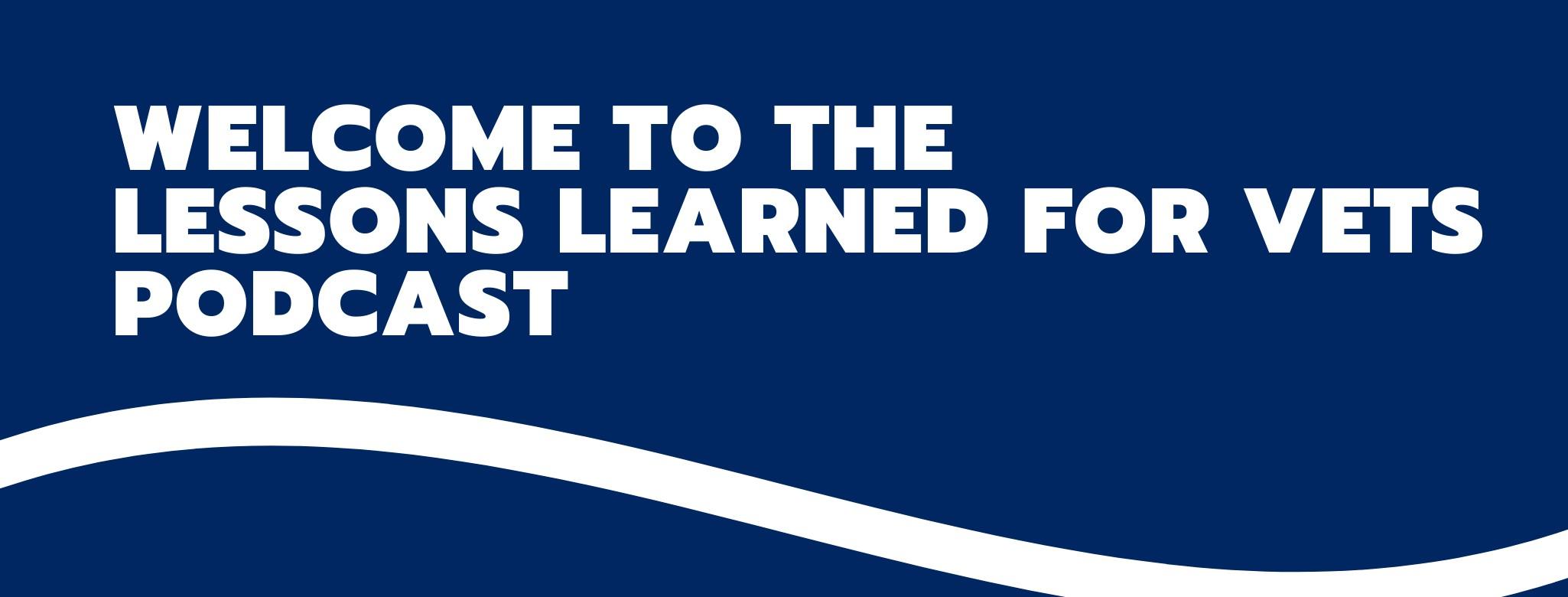
Season 3 Episode 106: How to Effectively Use LinkedIn with Adam Braatz - Part 2
On this episode of the Lessons Learned for Vets podcast, we continue our 2-part series unpacking content from Adam Braatz’s newly released book, LinkedIn Mastery for Veterans and Transitioning Service Members. We highly encourage our listeners to listen and digest Part 1 before continuing with this episode.
Now that we’ve walked through the different sections of a LinkedIn profile, it’s important to remember that your profile is a work in-progress; it’s a living and breathing marketing tool. It does not have to be perfect for it to start working for you. Build your profile for the task and job at hand. Once your profile is complete, it’s time to start leveraging the database and that means connecting to the right people.
Adam encourages people to start building a network with those who are already close. For example, your first connections might be with high school or college classmates, people you are currently serving with or those that you have previously served alongside. Next, begin to diversify your network by finding common threads. Common threads could be other people who work in your industry, live in your city, have a similar volunteer history or attended your alma mater. People with common threads have the potential to be fruitful connections. If you are a transitioning service member, it’s also effective to search for veterans who are in your industry. Always network outside the veteran bubble.
Be thoughtful, deliberate and intentional about how you are building your network. If there are no common threads, you are most likely not providing that connection with value and they are not providing you value. That connection is only adding to your vanity metric number of connections. Not only are you wasting your time but your news feed content will be filled with irrelevant information. Take the time to write a personalized note for every single connection request and mention the common thread. Quality connections are more important that the quantity of connections. Ideally, you will have a large quantity of quality connections. Have patience growing your network!
There is a theory that it takes 7 touch points between you and an ask. In many ways, that theory is correct. If you want to make a sale, establish a business partnership, solicit donations or find the next steps in your career, create and share content consistently. There are 2 sides to the content coin. The first side is sharing information about your journey that’s narrative and engaging and asking for advice or mentorship. The other side is sharing your subject matter expertise. Not only does it establish your credibility, but it also helps others learn. Content does not need to be lengthy to be effective. Adam suggests spending 15 minutes a day building your network and 15 minutes a day engaging with your network.
Once you land your first role after the military, don’t disappear from LinkedIn. Keep engaging with your network by sharing your expertise. Statistically, most veterans do not stay in their first role long-term, and you may need your network to find another job in the future. Your transition is not over once you start your first position.
Subscribe to our YouTube channel at https://tinyurl.com/llforvets22.
You can connect with Adam on LinkedIn at https://www.linkedin.com/in/abraatz/
Order LinkedIn Mastery for Veterans and Transitioning Service Members at https://a.co/d/2Hd88Ap
Explore Thriving Veteran at https://www.linkedin.com/company/thrivingvet/about/
SUBSCRIBE & LEAVE A FIVE-STAR REVIEW and share this to other veterans who might need help as they transition from the military!
Are You Struggling to Write Your Resume?
I created the Veteran Resume Self-inspection Checklist to lessen the resume writing struggle for veterans. This 11-item checklist will educate you in resume best practices while giving veterans a guide to assess their resume and determine if it's ready to send to employers.
Download Your Checklist Here




